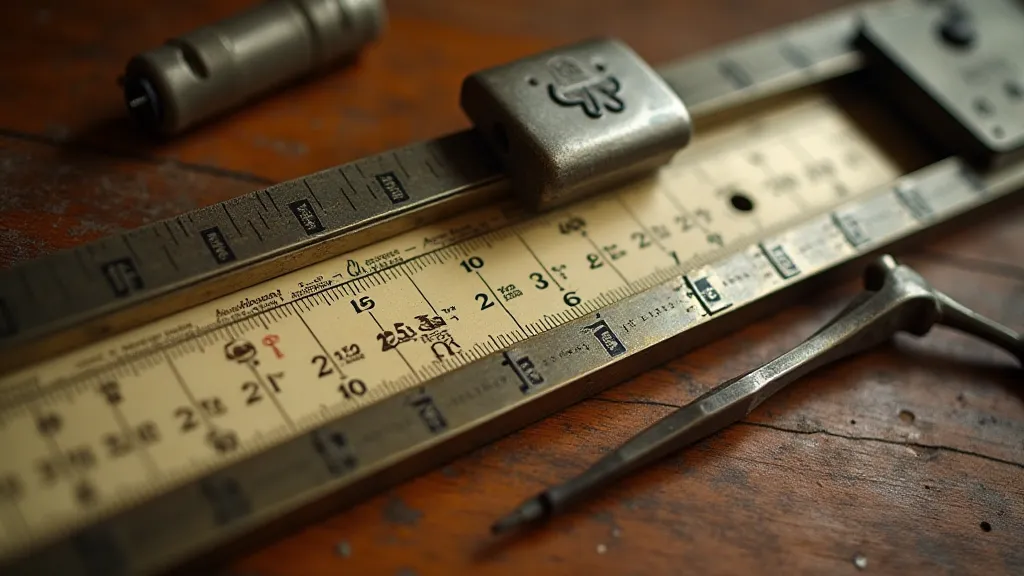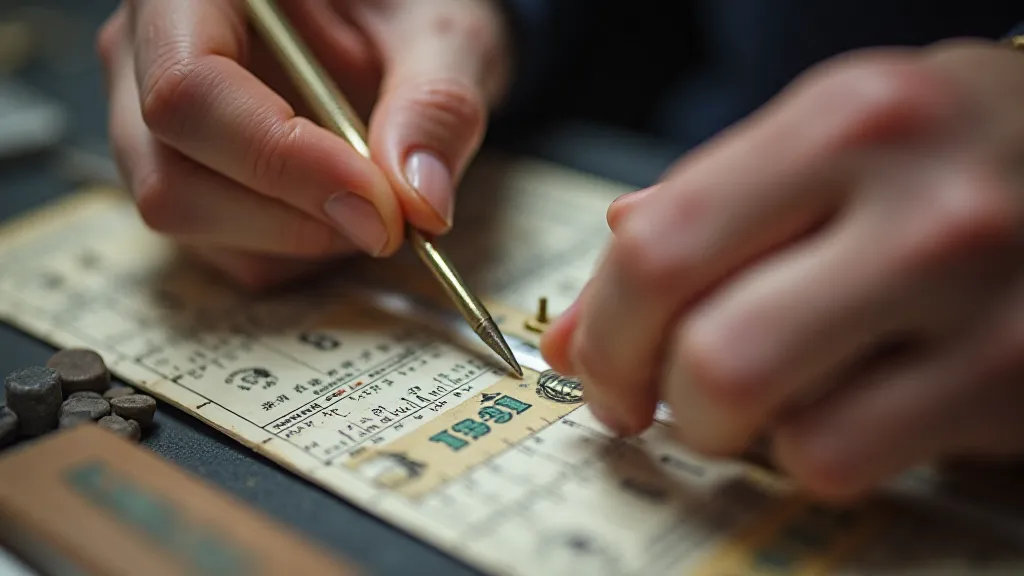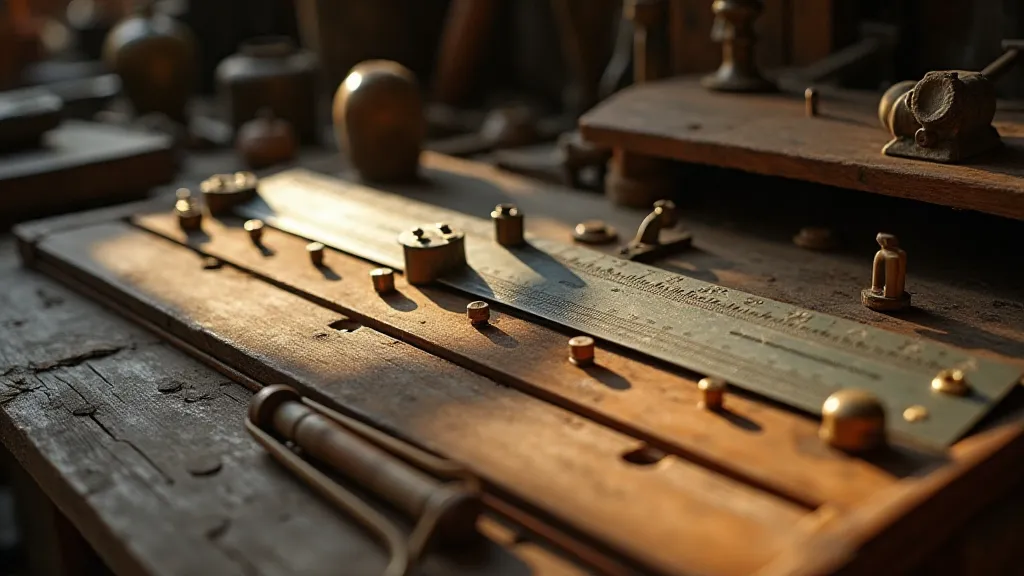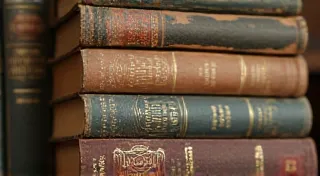The Alchemy of Restoration: Transforming Decay into Function
There’s a quiet magic in holding a vintage slide rule. More than just a calculating tool, it’s a tangible link to a time when ingenuity and mechanical precision reigned supreme. Imagine a young engineer, fresh out of university, relying on this elegant device to design bridges, rockets, and the very machines that would shape the modern world. To find one languishing in a dusty attic, its once vibrant markings faded and its brass tarnished, is to witness a poignant decline. But within that decay lies a promise – the promise of restoration, of breathing new life into a piece of engineering history. This isn's just about fixing a broken object; it's about rediscovering a connection to the past, honoring the craftsmanship of its maker, and participating in a small act of preservation.
My own journey into slide rule restoration began somewhat unexpectedly. I inherited a collection of antique tools from my grandfather, a man who rarely spoke of his past but whose hands bore the quiet testament of a lifetime spent in engineering. Among them was a Pickett Model 1, its scales obscured by a film of grime and its cursor brittle and cracked. I confess, initially, I was more intrigued by its aesthetic than its function. But as I began to research the intricate workings of this miniature marvel, a respect blossomed into a passion. I wasn’t just repairing a tool; I was unlocking a story.

The Materials of Time: A Deeper Dive
Understanding the materials is the first step in any restoration project. Slide rules, typically manufactured from the late 19th to mid-20th centuries, are constructed from a fascinating combination of substances, each presenting its own challenges for the restorer. The body is almost always made of wood, most commonly mahogany or birch, chosen for their stability and ability to hold the thin veneer that marked the scales. These scales, etched with incredible precision, were often printed on diaphanous paper and painstakingly adhered to the wooden base. The cursor, a vital component for accurate readings, was commonly crafted from ivory, celluloid, or early plastics. Finally, brass, used extensively in the hardware, offered both strength and a pleasing aesthetic.
The choice of materials wasn't arbitrary; it was dictated by the properties required for precision calculation. The density and stability of the wood ensured minimal expansion or contraction that could distort the scales. The type of paper used for the scales also influenced their long-term survival; thinner, more delicate papers were more susceptible to degradation. One could spend a considerable amount of time simply appreciating the design choices and understanding why each element was selected. Indeed, a focused exploration of the materials and their impact on the slide rule's functionality is a worthy study, as detailed in A Legacy in Layers: Examining the Materials of Slide Rule Construction.
Each material reacts differently to the passage of time. Wood can dry out, crack, and warp. Paper scales become brittle and prone to tearing. Ivory yellows and becomes fragile. Brass tarnishes and can develop a stubborn verdigris. The restoration process requires a delicate touch and a thorough understanding of these material properties. Harsh chemicals or abrasive cleaning methods can easily cause irreparable damage.
A Gentle Approach: Cleaning and Stabilization
The initial stage of restoration is always about stabilization and gentle cleaning. Aggressive scrubbing is absolutely forbidden. Instead, I prefer a methodical approach, starting with a soft brush and a vacuum to remove loose dust and debris. For stubborn grime, a slightly dampened cloth with a mild soap solution (specifically designed for antique wood) can be used, but with extreme caution. Multiple passes with a clean, damp cloth are essential to remove any soap residue.
Paper scales are particularly vulnerable. Attempts to brighten faded scales are generally discouraged, as any intervention can weaken the paper further. The focus should be on removing surface dirt and stabilizing the paper to prevent further degradation. Specialized archival sprays can be used to consolidate the paper, but these should be applied sparingly and with careful consideration. The goal isn’t to restore the scales to their original vibrancy, but to preserve what remains.
Re-gluing and Structural Repair
Frequently, slide rules suffer from detached scales or structural damage to the body. Re-gluing scales requires a specialized adhesive – a conservation-grade glue that is reversible and won’t damage the paper. This glue is usually applied with a fine brush, carefully aligning the scale and securing it with gentle pressure. The process demands patience and a steady hand. I find it helpful to work in a well-lit area with a magnifying glass to ensure precise alignment.
Structural repairs to the wooden body also require a conservative approach. Small cracks and chips can be filled with a reversible wood filler, carefully matched to the original color. Larger cracks may require the insertion of thin strips of wood, glued in place and then sanded flush with the surface. The key is to make repairs that are structurally sound but aesthetically discreet, minimizing any alteration to the original appearance of the slide rule.

Brass Care and Polishing
The brass hardware, once gleaming and bright, often suffers from tarnish and verdigris. While aggressive polishing can remove this discoloration, it can also damage the surface and remove any patina that has accumulated over time. I prefer a more gentle approach, using a specialized brass cleaner that is specifically formulated for antique metals. Multiple applications of the cleaner, followed by a thorough rinsing and gentle drying, can significantly improve the appearance of the brass without removing its character. A soft cloth is the best tool for polishing, avoiding abrasive materials that can scratch the surface. Examining different generations of slide rules can highlight the evolution of manufacturing techniques and the changes in design, which is detailed further in Echoes in Brass: Comparing Slide Rule Generations and Manufacturers.
Beyond Calculation: The Human Element
Restoring a slide rule isn’t just about the mechanics. It’s about understanding the individuals who relied on these devices. Think of the engineers, mathematicians, and scientists who performed complex calculations using these tools, shaping our world in profound ways. The imprints of their thought, the way they interacted with the slide rule, are almost palpable. We can try to imagine the pressure they faced, the solutions they sought, and how this seemingly simple instrument became an extension of their intellect. It’s a thought-provoking journey – and a glimpse into the minds of those who propelled innovation forward, as discussed in Imprints of Thought: Discovering the Hands that Operated the Slide Rule.
The Final Touches and Appreciation
Once the cleaning, repairs, and polishing are complete, the final step is to assess the overall appearance and functionality of the slide rule. The cursor should move smoothly along the scales, and the scales themselves should be legible and intact. It’s important to remember that a restored slide rule is not a pristine antique. It will bear the marks of its age and use, and that is part of its charm. These marks tell a story – a story of ingenuity, calculation, and the passage of time. The subtle curvature of a scale, the faint scratches on the brass, even the slight discoloration of the wood – all are testaments to a life lived, a purpose served.
The design of the slide rule wasn’t solely driven by calculation; it was intertwined with advancements in manufacturing and engineering principles. From the materials used to the overall construction, it stands as a tangible reminder of a time when precision and ingenuity were paramount. Its influence extends beyond mere calculation; it has left an indelible mark on modern design and engineering practices, further highlighted in The Weight of Legacy: How Slide Rules Shaped Modern Design.

Holding a restored slide rule, feeling its weight and admiring its intricate design, evokes a profound sense of connection to the past. It’s a tangible reminder of a time when precision and ingenuity were paramount. More than just a calculating tool, it’s a work of art – a testament to the craftsmanship of its maker and the enduring power of human innovation. The alchemy of restoration isn’t just about transforming decay into function; it’s about preserving a piece of history and celebrating the ingenuity behind its creation.





